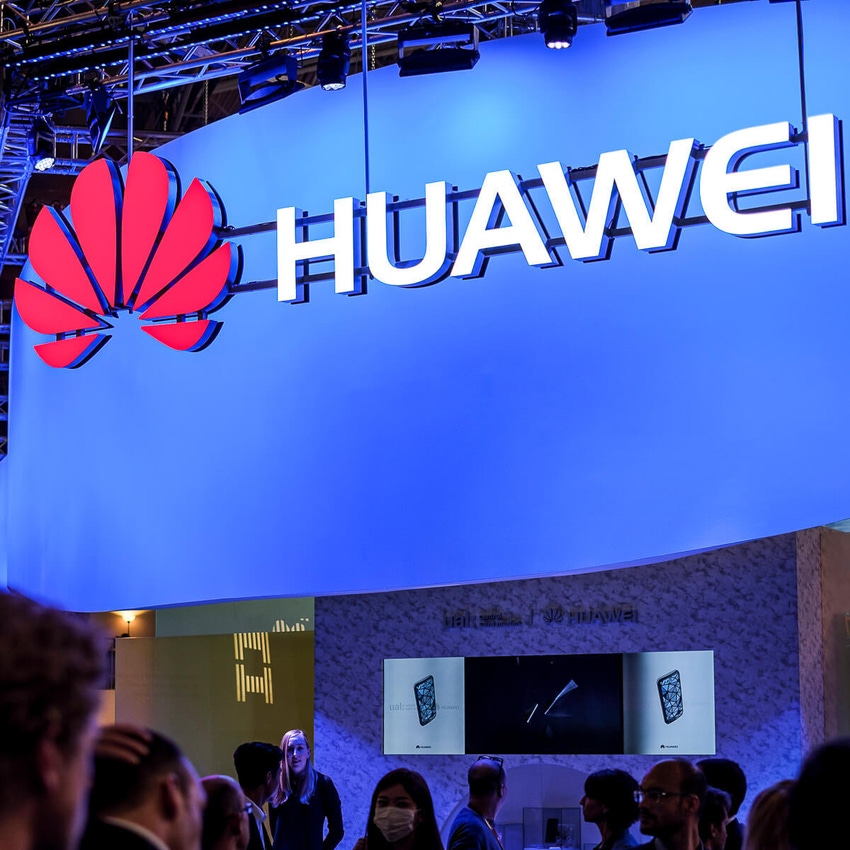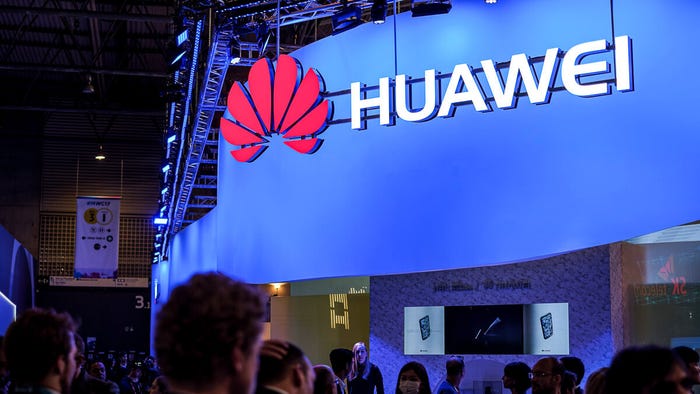Huawei exec generates reality distortion field in IFA keynote
Huawei's William Tian took to the IFA stage to tout the company's products and latest phones. But he did little to address struggles the company faces.

BERLIN – Huawei has had a stormy few years, but the executive heading its European consumer business brought a tale of sunshine and rainbows to the IFA tech trade show here.
In a keynote interview Saturday morning, William Tian, president of Huawei's Consumer Business Group for Western Europe, showed off a set of new devices and said the Chinese firm was shaking off the effects of a 2019 US export ban that led Google to cut Huawei off from all but the open-source core of its Android operating system.
"Yes, Huawei has been facing a lot of challenges," Tian told his interviewer, CCS Insights' chief analyst, Ben Wood. "But we are still going, we are still innovating."
Figure 1:  Huawei's William Tian took to the IFA stage to tout the company's products and latest phones, but did little to address struggles the company faces.
Huawei's William Tian took to the IFA stage to tout the company's products and latest phones, but did little to address struggles the company faces.
(Source: Karlis Dambrans on Flickr, CC 2.0)
The challenges have been especially difficult in the handset business, where Huawei has had to replace Google's cloud services, core apps and Play Store with homegrown replacements that it unveiled in 2020.
The company's revenue plummeted by 29% in the first half of 2020; in the first half of 2022, it reported a further drop in revenue of 5.9% but a much worse 25% plunge in device sales.
Huawei's CEO and founder warned employees that things would not get better in a late August memo.
"Under such circumstances, Huawei's overly optimistic expectations about the future will be lowered," he wrote. "In 2023 or even 2025, we must take survival as the main program."
Tian did not mention the company's recent financials or the recent words of his boss, instead pointing toBrand Finance's estimate of $71.2 billion in Huawei "brand value" as well as the company's $15.7 billion research and development budget.
Showing off devices
To show the effect of that expense, Tian brought a sample of new Huawei gadgets to the stage: the €2199 MateBook X Pro laptop, the €549 Nova 10 and €699 Nova 10 Pro smartphones, the €649 MatePad Pro tablet and the €399 Watch D smartwatch.
"This is the world's best front-camera phone," Tian told Wood as he held up the Nova 10 Pro and showed how it features two cameras to handle both individual and group selfies.
Saying "you've had to build your own app ecosystem," Wood asked about the AppGallery store on that and other new Huawei phones.
"We're developing very fast," Tian said. "You can access almost every app you want on your phone in the AppGallery."
A slide of dozens of AppGallery app icons included the logos of such name-brand firms as Deutsche Bahn, KFC, Snapchat, Deezer and Sixt, but Tian admitted that other companies have yet to support this app marketplace: "In a few occasions, if you cannot find one app, you can use our Petal Search to search the apps."
He did not, however, explain that this alternative app search points users to third-party sites hosting copies of the Android APK files for the likes of Instagram and Twitter – something visitors to Huawei's show-floor space here could see firsthand by trying out the AppGallery on demo phones.
That's a disastrously insecure way to add apps. As Google's Android and Play legal director Tristan Ostrowski warned in a February 2020 post advising against "sideloading" copies of Google's core apps, it "carries a high risk of installing an app that has been altered or tampered with in ways that can compromise user security."
The data
After a discussion of Huawei's work in collaboration and video-conferencing tools, Wood turned to the company's health and fitness efforts.
"Fitness and health is one of Huawei's most focused categories," Tian said before demonstrating how the Watch D on his wrist took his blood pressure by using a tiny pump to tighten its strap against his wrist. (He didn't offer up the results.)
Noting the sensitivity of health data, Wood inquired about where Huawei stores it and other user data.
Tian said what happens on Huawei devices in Europe stays on Huawei servers in Europe: "All of it is kept strictly in the European Union."
Wood followed up, asking "It's not going back to China?"
Want to know more? Sign up to get our dedicated newsletters direct to your inbox.
Tian confirmed that, saying "We have a very firm commitment to protect our users' data and privacy."
A US analyst who watched the keynote pronounced himself as exceedingly unpersuaded.
"I think it was a massive disappointment," said Mark Vena, CEO and principal analyst at Smart Tech Research. "They have not confronted the security and privacy issues that they have front and center."
He rated Huawei's app-store problem a deal-breaker by itself.
"I can clearly see that they have tremendous engineering and innovation resources," Vena said. "But it's just hard for me to recommend any of their devices."
(Disclosure: IFA's organizers are paying most travel costs for a set of invited US journalists and analysts, myself included.)
Related posts:
— Rob Pegoraro, special to Light Reading. Follow him @robpegoraro.
Read more about:
EuropeAbout the Author(s)
You May Also Like











